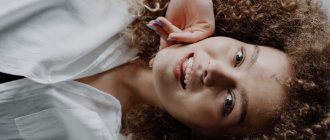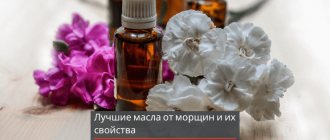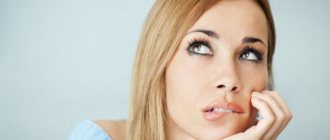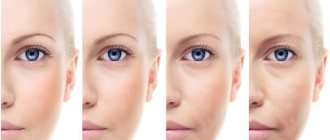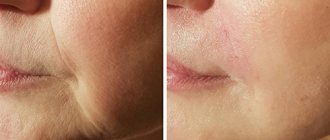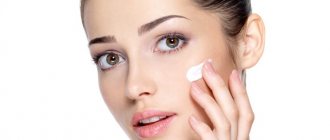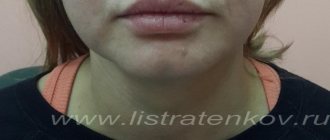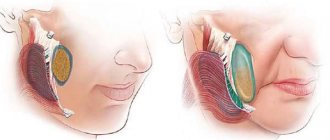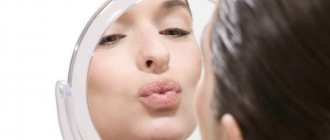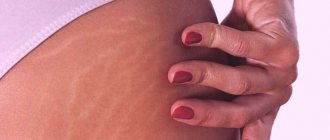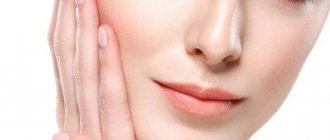1.General information
It is not difficult to guess that there is no such diagnosis as “smoothness of the nasolabial fold” in any classification, just as there is no such disease. Of course, this is only a symptom, one of many phenomena objectively observed and recorded by a doctor - which, however, has great diagnostic significance in neurology and often serves as an informative sign of a pathological process.
Nasolabial folds are paired narrow grooves or wrinkles on the skin that run from the wings of the nose to the corresponding corners of the lips. It should be noted that close attention to these skin folds is shown by another medical specialty that has been rapidly and successfully developing in recent decades, namely aesthetic medicine. The fact is that many people - and not only women, as one might think - their own nasolabial folds can be perceived as too deep, unnatural, “aging” or even disfiguring, which is the reason for seeking help, say, to a plastic surgeon. However, such a problem, which can be subjectively very acute or even extremely valuable, at least does not pose a direct threat to health, while an asymmetric change in the shape or relief of the folds can be a very alarming sign in the neurological sense.
It is known that in a living person, in any case possessing a unique individuality in all aspects, the face is never completely symmetrical. Human facial expressions are so rich, varied and individual that this is reflected in the shape of wrinkles, habitual tension and relaxation of facial muscles, etc. However, a certain degree of asymmetry - the smoothness of one of the nasolabial folds with the same depth and length of the other - ceases to be a normal personal feature and becomes a pathology.
A must read! Help with treatment and hospitalization!
Cosmetical tools
A properly selected set of skin care products will help effectively combat both nasolabial and other types of wrinkles, sagging skin, and loss of clear facial contours.
Pay attention to the following:
- Moisturizing – moisture increases skin elasticity.
- Nourishing - these products retain moisture in the skin cells and prevent it from evaporating.
- With antioxidants - slow down the natural aging process, accompanied by loss of skin elasticity.
- Acid peels – accelerate the process of natural cell regeneration.
When choosing skincare cosmetics, study not only the effect declared by the manufacturer, but also the composition of the product.
The most effective components in skin care cosmetics are:
- Hyaluronic acid – smoothes the upper layers of the skin, moisturizes and retains water molecules in skin cells.
- Biopeptides - stimulate the skin's natural production of collagen.
- Vitamin C – protects the skin from harmful external influences and gives it a healthy appearance.
- Resveratrol – saturates the skin with oxygen, helps smooth out wrinkles.
- Rhamnose – stimulates collagen production, strengthens and tightens the skin.
- Adenosine – effectively smoothes folds and wrinkles.
When choosing anti-aging cosmetics, focus not on your biological age, but on the condition of your skin.
Also, do not forget about skin types, for example, rich nourishing creams and oils are very useful for dry skin, but for those with oily or combination skin they can cause rashes and acne.
2. Reasons
The maxillofacial zone is extremely saturated with blood vessels, lymph nodes, various glands (sebaceous, sweat) and, among other things, nerves - first of all, numerous branches of the facial nerve, which is part of a large group of cranial nerves (there are thirteen in total). From a neurophysiological point of view, the facial nerve is a motor nerve, but in fact it performs many functions, also responsible for sensitivity, taste perception, etc.
Accordingly, lesions of the facial nerve can manifest themselves with a wide variety of symptoms - from intense pain due to neuritis to passive and not consciously controlled drooping of one half of the face.
Smoothness of the nasolabial fold, expressed to one degree or another, occurs in many neurological diseases, starting with stroke: in this case, the dead area of the cerebral cortex is simply not able to send command signals to the nerve, and the facial muscles, the final executors of such commands, sag limply in a relaxed state.
The nasolabial fold can be smoothed in case of total or partial paralysis of the facial nerve (partial paralysis is called paresis), Rossolimo-Melkersson syndrome, compression and/or pinching of the nerve due to a tumor growing in the maxillofacial structures, fibrosis (scarring, abnormal growth of connective tissue), injuries and dislocations of the jaw joints, birth injuries.
Visit our Neurology page
Why does asymmetry of nasolabial folds appear?
Physiological reasons
The faces of most people are asymmetrical, which is explained by slight differences in the structure of the right and left halves and the formation of facial wrinkles. Asymmetry of the nasolabial folds is especially noticeable in the habit of smiling at one corner of the mouth, curling the mouth to express dissatisfaction, sleeping on one side, or chewing gum on one side of the mouth. Symmetry disorders progress with age, but in the absence of other causes they do not reach the level of a noticeable cosmetic defect.
Facial neuritis
The most common neurological cause of asymmetry of the nasolabial folds is considered to be facial neuritis (Bell's palsy), accompanied by unilateral weakness of the facial muscles. The pathology occurs primarily as a result of a cold or complicates the course of the following conditions:
- Otitis media
Symptoms develop against the background of shooting pain in the ear. - Parotitis.
The appearance of asymmetry is preceded by an enlargement of the salivary gland, changes in facial contours, and signs of general intoxication. - Herpetic infection.
The manifestation of neuritis is caused by a special form of herpes zoster - Hunt's syndrome, in which ear pain, skin rashes, hearing loss, and dizziness are observed. - Facial nerve injuries.
The nasolabial fold is smoothed out due to a violation of the integrity of the nerve trunk or its compression by scar tissue. - Melkersson-Rosenthal syndrome.
Occurs with periodic relapses. Complicated by neuritis in 2% of patients. Other manifestations include dense facial swelling and a folded tongue. - Alternating syndromes.
Facial paresis in Millard-Gübler syndrome is complemented by the opposite hemiparesis, in Gasperini syndrome – strabismus, hearing loss, and sensitivity disorders. Brissot-Sicard syndrome is characterized not by paresis, but by spasm of the facial muscles with a deepening of the nasolabial fold.
Neuritis is diagnosed with tumors of the brain and the area of the facial nerve, for example, neuroma of the internal auditory canal. In addition, Bell's palsy occurs against the background of neuroinfections, which include:
- Encephalitis.
A group of diseases of fungal, bacterial and viral nature with intoxication syndrome, general cerebral and focal symptoms. - Polio.
The lesion is caused by the polio virus and is observed in the stem form of the disease. - Brain abscess.
Limited accumulation of pus in the brain tissue, accompanied by focal symptoms and severe intoxication. - Neurosyphilis.
In the early stages, focal, cerebral, and general infectious manifestations are detected. Subsequently, mental disorders, progressive dementia, and stroke-like symptoms are detected. - NeuroAIDS.
Paresis is combined with aphasia, ataxia, mnestic disorders, and psychopathological manifestations. - Botulism.
Develops acutely after eating canned food. Paresis and paralysis are typical, respiratory and cardiac problems are possible.
In the initial stages of neuritis, asymmetry appears due to smoothing of the nasolabial fold on the affected side. In the absence of treatment or inadequate treatment, patients develop contracture of facial muscles. In this case, the nasolabial fold on the affected side, on the contrary, becomes more pronounced.
Asymmetry of nasolabial folds
Cerebrovascular disorders
Asymmetry of nasolabial folds is of great practical importance in the development of acute cerebrovascular accidents. This symptom is clearly visible and detected at an early stage. Along with other signs (slurred speech, weakness of the limbs, deviation of the tongue to the side), it allows you to quickly determine the nature of the problem and promptly deliver the patient to a medical facility. It is detected in the following variants of stroke:
- transient cerebrovascular accident;
- ischemic and hemorrhagic strokes;
- migraine stroke;
- subarachnoid hemorrhage.
The frequency of occurrence of changes in the configuration of nasolabial folds in different types of stroke varies. The symptom is quite typical, but not pathognomonic for this pathology; it occurs due to damage to the parts responsible for the functioning of the facial nerve. The absence of a sign is not a basis for excluding stroke.
Traumatic brain injuries
As in the previous case, asymmetry of the nasolabial folds develops as a result of disruption of the brain centers that regulate the activity of the facial nerve. Can be observed with the following traumatic brain injuries:
- brain contusion (mostly moderate and severe);
- acute compression of the brain;
- diffuse axonal damage;
- intracerebral, subdural, epidural hematomas.
The severity of asymmetry differs significantly. The pathology is most noticeable with acute compression and is combined with a “sailing cheek” and lagophthalmos.
Innervation disorders in children
The symptom often accompanies various forms of dysarthria in children. Gross changes in most cases are observed in cerebral palsy. Slight asymmetry of the nasolabial folds is found in children with erased dysarthria associated with inadequate innervation of the tongue, lips, and soft palate. Several cranial nerves are affected, the asymmetry is complemented by limited movements of the lower jaw and tongue, hypersalivation, and impoverished facial expressions.
Dental problems
Asymmetry of nasolabial folds can be congenital or acquired. Caused by the following reasons:
- Lack of teeth.
With a long-term absence of molars and premolars on one side, the contours of the face gradually change, the nasolabial fold deepens. Bilateral absence of teeth causes deepening of the folds on both sides, the severity of the asymmetry is determined by the location of the remaining dental units. - Crossbite.
There is a crossing of the dentition when the jaws are closed. The chin moves, the lip sinks, which entails a violation of the symmetry of the lower parts of the face. - Tumors of the salivary glands.
Distortion of the nasolabial folds can be determined by adenomas, lipomas, angiomas, neuromas, sarcomas, carcinomas, and is formed secondary to compression or germination of the facial nerve passing near the salivary gland. - TMJ diseases.
Restriction of movements in the temporomandibular joint due to arthrosis, ankylosis, and contractures causes lateral displacement of the lower jaw and distortion of the face. - Tumors of the jaws.
Asymmetry becomes one of the first symptoms of a neoplasm of the upper jaw when it is located in the projection of the nasolabial fold. - Jaw defects.
Developmental defects, post-traumatic deformities, defects after tuberculosis, osteomyelitis, and removed tumors of the upper jaw lead to receding cheeks and smoothing of the nasolabial fold. In patients with mandibular defects, asymmetry is formed due to displacement of the jaw when opening the mouth. - Injuries.
With fresh jaw fractures, asymmetry is provoked by swelling and displacement of fragments. In the long term, changes in the contours of the nasolabial folds are caused by improper fusion of bone fragments and excessive formation of callus.
Consequences of aesthetic procedures and operations
The lesion is often potentiated by the introduction of fillers based on calcium hydroxylapatite, polycaprolactone, and L-lactic acid polymer. The listed agents cause increased formation of fibrin fibers and proliferation of connective tissue. Some time after the procedure, uneven fibrosis or the formation of coarse fibrous strands causing asymmetry may be observed.
Collagen-based fillers quickly dissolve, which necessitates the need to inject an excess amount of the drug and possible overcorrection of the nasolabial folds. Sometimes, after the use of such fillers, granulomas and areas of compaction appear. The formation of granulomas is also observed after the injection of the patient’s own adipose tissue.
In some patients, asymmetry occurs after ligature lifting of the nasolabial folds and the use of various methods of surgical facelift. The reasons for the changes are insufficiently careful planning or violation of the intervention technique, the patient’s failure to comply with medical recommendations, and complications in the postoperative period.
3. Symptoms and diagnosis
The smoothed nasolabial fold is visually perceived as less deep and prominent, with a simultaneous lowering of the associated angle of the mouth and facial muscles on the same side of the face. The severity of the symptom can be very different - from barely noticeable asymmetry to the complete absence of the fold (for example, with Millard-Gubler syndrome).
The localization of the symptom is also diagnostically important: in particular, with sensory cortical aphasia of Broca-Wernicke, the right nasolabial fold is always smoothed out.
The diagnosis, of course, is not the skin fold as such, but the neurological status of the patient. A detailed medical history is collected, a thorough neurological examination is carried out with the study of reflexes, skin sensitivity, muscle strength of the limbs, coordination of movements, and speech. Instrumental studies are prescribed as necessary; The most informative is tomographic methodology, but almost always the electrical activity of the brain is also studied using EEG; Dopplerography may be indicated as a way to measure major cerebrovascular vessels, etc.; in some cases, it is advisable to conduct a neuropsychological examination and/or other additional diagnostic methods.
About our clinic Chistye Prudy metro station Medintercom page!
Folk recipes
If you don’t trust the “chemistry” in branded cosmetics, find out how to remove nasolabial folds with masks made from natural ingredients.
To make such masks, you will need the simplest and most affordable components that can be purchased at a grocery store or pharmacy.
Egg mask.
- You will only need one chicken egg (preferably homemade).
- Separate the white from the yolk and beat them separately with a whisk.
- Apply the protein to the nasolabial area and place pieces of a paper napkin on top.
- You need to walk around in such an improvised fabric mask for about half an hour, then remove the napkin, wash and apply the yolk to the skin.
- After 10 minutes, wash your face again and treat your skin with a tonic.
Garlic mask.
- You will need one clove of garlic (mash into a pulp), a tablespoon of liquid or melted honey (if you are not allergic), a tablespoon of cosmetic clay and a tablespoon of milk (preferably homemade).
- Mix the ingredients and apply to your nasolabial lips for 15 minutes, then rinse with water.
- Which clay to choose depends on your skin type.
Aloe mask.
- You will need a tablespoon of natural aloe juice, a tablespoon of softened coconut oil and a couple of drops of grapefruit essential oil (if you are allergic to citrus fruits, you can take rose essential oil).
- Mix the ingredients and apply to the nasolabial lips, massage this area with upward movements, leave the mask for 20 minutes.
- After the time has passed, massage the remaining mask into the skin and, if necessary, remove excess with a napkin.
Olive oil mask.
- Mix a tablespoon of soft coconut oil, a teaspoon of olive oil, a tablespoon of honey and the yolk of one chicken egg.
- Apply the mask to your nasolabial lips and massage, leave for 20 minutes, rub the residue into the skin, remove excess with a napkin.
Mask with turmeric.
- Mix a teaspoon of turmeric powder and the same amount of cinnamon powder with three tablespoons of liquid honey.
- Apply the mixture to the problem area and leave for at least 20 minutes - the longer the better. Rinse off with warm water.
Experiment with different components. Of course, to evaluate the result, you need about a month of regular use (1-2 times a week), but you can draw conclusions after the first use.
If you feel burning, itching or other discomfort in the areas where the mask was applied during or after the procedure, look for other recipes or visit a professional cosmetologist.
4.Treatment
Therapy is entirely determined by the array of diagnostic results obtained and is etiopathogenetic, i.e. focused on eliminating the cause. Thus, in different clinical situations, anti-inflammatory and/or analgesic drugs, myostimulation, drugs with the effect of stimulating cerebral circulation and nutrition, and many others may be needed. It is unrealistic to list all the therapeutic strategies and regimens practiced today; they are selected strictly according to individual indications, however, in some cases, pronounced facial asymmetry, unfortunately, remains irreversible (for example, as part of the consequences of a stroke). It is important to remember that if any changes are noticed in the usual facial expressions, individual facial symmetry, speech, sensitivity, you should definitely see a neurologist as soon as possible: perhaps this will prevent much more serious problems than a purely cosmetic imbalance.
Massage and exercise
A professional massage in a salon will give results faster, but you can save a lot with regular self-massage sessions.
It is important to perform all movements strictly in accordance with the recommendations of professionals:
- Before starting the session, cleanse your face and apply a rich cream or oil so that your fingers glide over the skin and do not stretch it unnecessarily.
- Fold your palms into a mouthpiece and bring them to your mouth so that your index fingers lie along your nasolabial lips and your thumbs are under your lower jaw. Using pressure on your face, slowly move your hands up to your hairline.
- Place your right palm along the line of your right cheekbone, pressing your index finger to your cheek. Press and move your hand from the center of the face to the ear, while at the same time with your left hand, pull the skin above the cheekbone up to the temple.
- Using your fingertips, move from the middle of the chin along the nasolabial lips to the wings of the nose, and then press on the points under the nostrils. Repeat three times, then massage your nose – wings and sides – for a few seconds. The movements must be confident - you are not just stroking the skin, but massaging the facial muscles.
- Run your fingers from the chin to the nasolabial lips so that your middle fingers lie along the folds, and then, with strong pressure, spread your palms to the sides, stretching your cheeks towards your ears.
If you are wondering how to remove nasolabial folds on your face with a massage, you will be pleasantly surprised at how simple and fast it is.
Each movement must be repeated 3-5 times, so the entire session will take you no more than 5 minutes.
You can easily combine the process of applying night cream with self-massage, and the result will not be long in coming - you will form a beautiful and toned oval face.
Special gymnastics will help you get rid of nasolabial lips, which also won’t take much time.
The main emphasis is on working those facial muscles that are practically not involved during conversation and everyday facial expressions.
Remember how to quickly remove nasolabial folds with exercises, get toned facial contours and reduce wrinkles around the mouth:
- Press your index fingers into the corners of your mouth. Relax your lips and stretch your mouth out to the sides with your fingers. Now try to purse your lips again, continuing to pull them to the sides with your fingers. Maintain tension for 10 seconds. Repeat 15-20 times.
- Press your nasolabial lips with your index fingers and try to smile, raising your cheeks. Hold the smile for 10 seconds, repeat the exercise 20-30 times.
- Open your teeth wide, while keeping your lips closed. Now try to smile widely without opening your lips. Alternate positions, repeat 10-20 times.
- Smile as wide as possible, while keeping your teeth tightly clenched. Hold the smile for about 10 seconds, repeat 15 times.
- Take a deep breath and puff out your cheeks. Hold the position for about 10 seconds, then puff out your cheeks several times in turn, as if you were rinsing your mouth with water. Relax your facial muscles and repeat the entire exercise 10-15 times.
For such gymnastics to give visible results, do not forget to perform it daily.
Also remember that gymnastics alone is not enough; it is important to use the right skin care products and protect your skin from the sun.
Is it possible to do without plastic surgery?
People often think that they can get by with a circular facelift. This is partly true - with shallow wrinkles, after lifting they soften. If the folds are deep and there are other problems associated with age, then both operations - a facelift and excision of the folds - can be performed for an optimal result.
In some cases, a plastic surgeon may recommend the installation of implants, which are installed for sagging or sunken cheeks. The operation itself is performed on an outpatient basis, under local anesthesia. During surgery, the plastic surgeon makes small incisions on both sides of the mouth and removes a small area of skin. The remaining skin can then be pulled tighter and sutured, creating the appearance of sharply softened folds. The plastic surgeon will position the incisions so that the surgical scars are as hidden as possible within the new folds. The operation is complex, so it is necessary to find a surgeon with experience in this particular procedure.
Makeup
If you are just starting to fight nasolabial folds or your folds are a feature of your face structure, look at how to remove nasolabial folds with makeup.
This is not difficult to do, you will need foundation, concealer, powder and highlighter:
- Choose a foundation that matches your skin tone exactly or a half shade lighter. It is impossible to ignore the foundation and “cover up” only the nasolabial lips - cosmetics in the folds will be very noticeable.
- After applying foundation, use a liquid concealer that is a shade lighter - apply a few drops along each nasolabial area and spread the concealer using a sponge or fingertips using patting movements. You can’t smear the concealer - just tap it in, otherwise visible streaks will form on your face.
- If you have a cream or liquid highlighter, apply it along your nasolabial lips immediately after the concealer has absorbed and dried, and then use powder. If your highlighter is dry, you can apply it over powder.
- Do not use a pearl, pink or white highlighter - it will emphasize your nasolabial lips even more; it is better to choose a beige or sand one.
- Do not apply too much of any cosmetic product into the folds of the skin - the products may clump, which will only emphasize the wrinkles.
Proper, neat makeup will help you look attractive and temporarily forget about nasolabial folds.
It is best to give preference to super-sustainable products at least in the mid-price category. Nasolabial folds are one of the most problematic areas after expression lines around the eyes - the loss of clear facial contours instantly reveals your age.
Choose those methods of dealing with the problem that you have no contraindications to, then the path to beauty will be safe.
0 Comments
